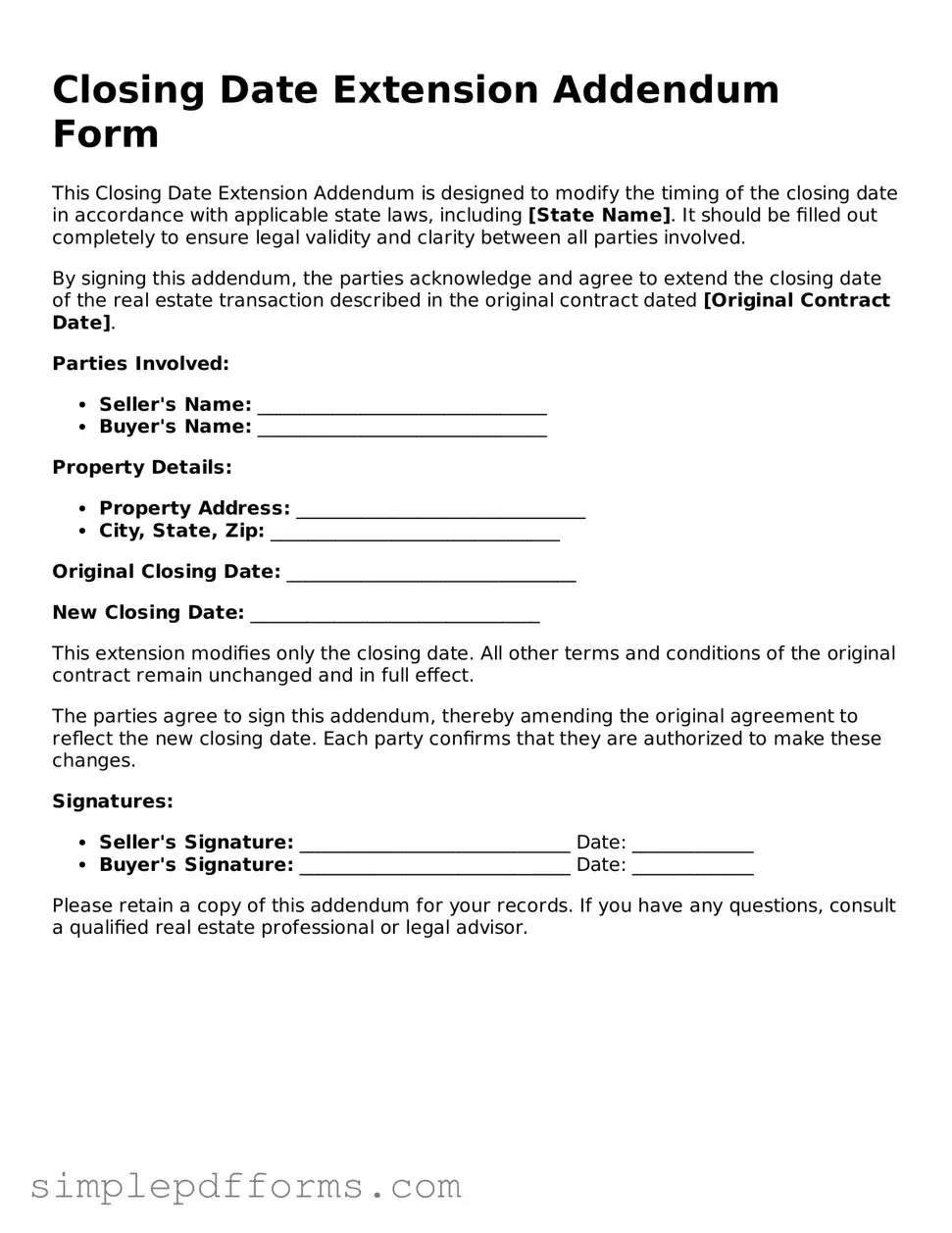Closing Date Extension Addendum Form
This Closing Date Extension Addendum is designed to modify the timing of the closing date in accordance with applicable state laws, including [State Name]. It should be filled out completely to ensure legal validity and clarity between all parties involved.
By signing this addendum, the parties acknowledge and agree to extend the closing date of the real estate transaction described in the original contract dated [Original Contract Date].
Parties Involved:
- Seller's Name: _______________________________
- Buyer's Name: _______________________________
Property Details:
- Property Address: _______________________________
- City, State, Zip: _______________________________
Original Closing Date: _______________________________
New Closing Date: _______________________________
This extension modifies only the closing date. All other terms and conditions of the original contract remain unchanged and in full effect.
The parties agree to sign this addendum, thereby amending the original agreement to reflect the new closing date. Each party confirms that they are authorized to make these changes.
Signatures:
- Seller's Signature: _____________________________ Date: _____________
- Buyer's Signature: _____________________________ Date: _____________
Please retain a copy of this addendum for your records. If you have any questions, consult a qualified real estate professional or legal advisor.
